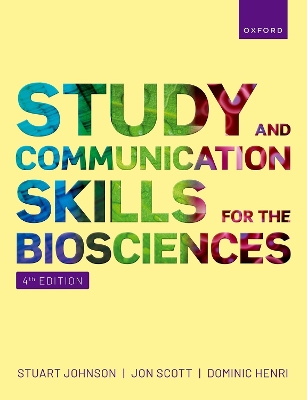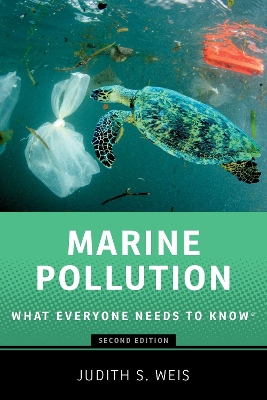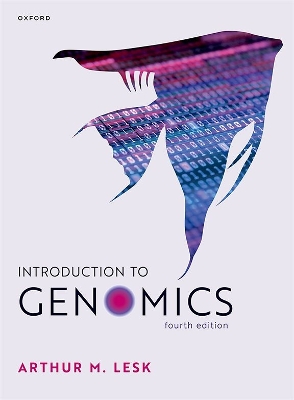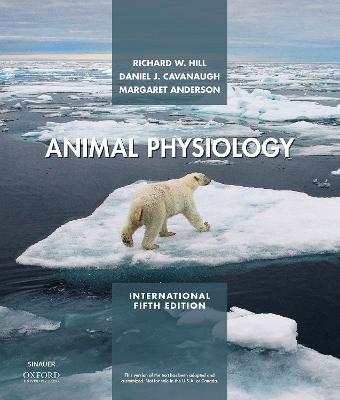Biological Science
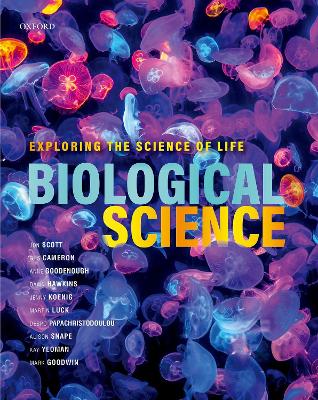 -10%
portes grátis
-10%
portes grátis
Biological Science
Exploring the Science of Life
Papachristodoulou, Despo; Yeoman, Kay; Scott, Jon; Goodwin, Mark; Cameron, Gus; Snape, Alison; Goodenough, Anne; Luck, Martin; Hawkins, Dawn; Koenig, Jenny
Oxford University Press
07/2022
1416
Mole
Inglês
9780198783688
15 a 20 dias
3045
Descrição não disponível.
Life and its Exploration: Foundational Principles
Topic 1: Exploring the science of life
Topic 2: The emergence of life on Earth
Topic 3: Defining Life
Topic 4: Evolutionary processes
Topic 5: The diversity, organisation, and classification of life
Quantitative Toolkits
Quantitative Toolkit 1: Understanding data
Quantitative Toolkit 2: Size and scale
Quantitative Toolkit 3: Describing data
Quantitative Toolkit 4: Ratio and proportion
Quantitative Toolkit 5: Understanding samples
Quantitative Toolkit 6: Designing experiments
Quantitative Toolkit 7: Assessing patterns
Quantitative Toolkit 8: Formulae and equations
Quantitative Toolkit 9: Rates of change
Module 1 LIFE AT THE MOLECULAR LEVEL
1: Building blocks: molecules and macromolecules
2: Energy: powering biochemical processes
3: Information: genes and genomes
4: Mendelian genetics
5: Reading the genome: gene expression and protein synthesis
6: Proteins and proteomes
7: Metabolism: energy capture and release from food
8: Molecular tools and techniques
Module 2 LIFE AT THE CELLULAR LEVEL
9: Characteristics of prokaryotic and eukaryotic cells
10: Cell division in prokaryotes and eukaryotes
11: Microbial diversity
12: The growth, measurement, and visualisation of cells
13: Microbes in life: harnessing their power
14: Microbes as agents of infectious disease
15: Viruses
Module 3 THE HUMAN ORGANISM: TISSUES, ORGANS, AND SYSTEMS
16: Physiology overview
17: Communication and control 1: introducing the nervous and endocrine systems
18: Communication and control 2: sensory systems
19: Communication and control 3: controlling organ systems
20: Muscle and movement
21: Cardiovascular system
22: Respiratory system
23: Exercise physiology
24: Renal system
25: Digestive system
26: Reproductive system
27: Immune system
Module 4 ORGANISMAL DIVERSITY: STRUCTURE, ADAPTATION, AND SURVIVAL
28: The structure of living organisms
29: Body plans
30: Interaction with the external environment
31: Movement, locomotion, and migration
32: Defence against predation and invasion
33: Reproduction and development
Module 5 ORGANISMS IN THEIR ENVIRONMENTS
34: Fundamental concepts: ecology, evolution, species, and speciation
35: Genes: evolutionary change in alleles, genotypes, and phenotypes
36: Populations: quantifying demographics and modelling change
37: Communities: species interactions and biodiversity metrics
38: Ecosystems: abiotic interactions and environmental processes
39: Challenges: key threats to ecosystems
40: Solutions: managing, conserving, and restoring ecosystems
Topic 1: Exploring the science of life
Topic 2: The emergence of life on Earth
Topic 3: Defining Life
Topic 4: Evolutionary processes
Topic 5: The diversity, organisation, and classification of life
Quantitative Toolkits
Quantitative Toolkit 1: Understanding data
Quantitative Toolkit 2: Size and scale
Quantitative Toolkit 3: Describing data
Quantitative Toolkit 4: Ratio and proportion
Quantitative Toolkit 5: Understanding samples
Quantitative Toolkit 6: Designing experiments
Quantitative Toolkit 7: Assessing patterns
Quantitative Toolkit 8: Formulae and equations
Quantitative Toolkit 9: Rates of change
Module 1 LIFE AT THE MOLECULAR LEVEL
1: Building blocks: molecules and macromolecules
2: Energy: powering biochemical processes
3: Information: genes and genomes
4: Mendelian genetics
5: Reading the genome: gene expression and protein synthesis
6: Proteins and proteomes
7: Metabolism: energy capture and release from food
8: Molecular tools and techniques
Module 2 LIFE AT THE CELLULAR LEVEL
9: Characteristics of prokaryotic and eukaryotic cells
10: Cell division in prokaryotes and eukaryotes
11: Microbial diversity
12: The growth, measurement, and visualisation of cells
13: Microbes in life: harnessing their power
14: Microbes as agents of infectious disease
15: Viruses
Module 3 THE HUMAN ORGANISM: TISSUES, ORGANS, AND SYSTEMS
16: Physiology overview
17: Communication and control 1: introducing the nervous and endocrine systems
18: Communication and control 2: sensory systems
19: Communication and control 3: controlling organ systems
20: Muscle and movement
21: Cardiovascular system
22: Respiratory system
23: Exercise physiology
24: Renal system
25: Digestive system
26: Reproductive system
27: Immune system
Module 4 ORGANISMAL DIVERSITY: STRUCTURE, ADAPTATION, AND SURVIVAL
28: The structure of living organisms
29: Body plans
30: Interaction with the external environment
31: Movement, locomotion, and migration
32: Defence against predation and invasion
33: Reproduction and development
Module 5 ORGANISMS IN THEIR ENVIRONMENTS
34: Fundamental concepts: ecology, evolution, species, and speciation
35: Genes: evolutionary change in alleles, genotypes, and phenotypes
36: Populations: quantifying demographics and modelling change
37: Communities: species interactions and biodiversity metrics
38: Ecosystems: abiotic interactions and environmental processes
39: Challenges: key threats to ecosystems
40: Solutions: managing, conserving, and restoring ecosystems
Este título pertence ao(s) assunto(s) indicados(s). Para ver outros títulos clique no assunto desejado.
Life and its Exploration: Foundational Principles
Topic 1: Exploring the science of life
Topic 2: The emergence of life on Earth
Topic 3: Defining Life
Topic 4: Evolutionary processes
Topic 5: The diversity, organisation, and classification of life
Quantitative Toolkits
Quantitative Toolkit 1: Understanding data
Quantitative Toolkit 2: Size and scale
Quantitative Toolkit 3: Describing data
Quantitative Toolkit 4: Ratio and proportion
Quantitative Toolkit 5: Understanding samples
Quantitative Toolkit 6: Designing experiments
Quantitative Toolkit 7: Assessing patterns
Quantitative Toolkit 8: Formulae and equations
Quantitative Toolkit 9: Rates of change
Module 1 LIFE AT THE MOLECULAR LEVEL
1: Building blocks: molecules and macromolecules
2: Energy: powering biochemical processes
3: Information: genes and genomes
4: Mendelian genetics
5: Reading the genome: gene expression and protein synthesis
6: Proteins and proteomes
7: Metabolism: energy capture and release from food
8: Molecular tools and techniques
Module 2 LIFE AT THE CELLULAR LEVEL
9: Characteristics of prokaryotic and eukaryotic cells
10: Cell division in prokaryotes and eukaryotes
11: Microbial diversity
12: The growth, measurement, and visualisation of cells
13: Microbes in life: harnessing their power
14: Microbes as agents of infectious disease
15: Viruses
Module 3 THE HUMAN ORGANISM: TISSUES, ORGANS, AND SYSTEMS
16: Physiology overview
17: Communication and control 1: introducing the nervous and endocrine systems
18: Communication and control 2: sensory systems
19: Communication and control 3: controlling organ systems
20: Muscle and movement
21: Cardiovascular system
22: Respiratory system
23: Exercise physiology
24: Renal system
25: Digestive system
26: Reproductive system
27: Immune system
Module 4 ORGANISMAL DIVERSITY: STRUCTURE, ADAPTATION, AND SURVIVAL
28: The structure of living organisms
29: Body plans
30: Interaction with the external environment
31: Movement, locomotion, and migration
32: Defence against predation and invasion
33: Reproduction and development
Module 5 ORGANISMS IN THEIR ENVIRONMENTS
34: Fundamental concepts: ecology, evolution, species, and speciation
35: Genes: evolutionary change in alleles, genotypes, and phenotypes
36: Populations: quantifying demographics and modelling change
37: Communities: species interactions and biodiversity metrics
38: Ecosystems: abiotic interactions and environmental processes
39: Challenges: key threats to ecosystems
40: Solutions: managing, conserving, and restoring ecosystems
Topic 1: Exploring the science of life
Topic 2: The emergence of life on Earth
Topic 3: Defining Life
Topic 4: Evolutionary processes
Topic 5: The diversity, organisation, and classification of life
Quantitative Toolkits
Quantitative Toolkit 1: Understanding data
Quantitative Toolkit 2: Size and scale
Quantitative Toolkit 3: Describing data
Quantitative Toolkit 4: Ratio and proportion
Quantitative Toolkit 5: Understanding samples
Quantitative Toolkit 6: Designing experiments
Quantitative Toolkit 7: Assessing patterns
Quantitative Toolkit 8: Formulae and equations
Quantitative Toolkit 9: Rates of change
Module 1 LIFE AT THE MOLECULAR LEVEL
1: Building blocks: molecules and macromolecules
2: Energy: powering biochemical processes
3: Information: genes and genomes
4: Mendelian genetics
5: Reading the genome: gene expression and protein synthesis
6: Proteins and proteomes
7: Metabolism: energy capture and release from food
8: Molecular tools and techniques
Module 2 LIFE AT THE CELLULAR LEVEL
9: Characteristics of prokaryotic and eukaryotic cells
10: Cell division in prokaryotes and eukaryotes
11: Microbial diversity
12: The growth, measurement, and visualisation of cells
13: Microbes in life: harnessing their power
14: Microbes as agents of infectious disease
15: Viruses
Module 3 THE HUMAN ORGANISM: TISSUES, ORGANS, AND SYSTEMS
16: Physiology overview
17: Communication and control 1: introducing the nervous and endocrine systems
18: Communication and control 2: sensory systems
19: Communication and control 3: controlling organ systems
20: Muscle and movement
21: Cardiovascular system
22: Respiratory system
23: Exercise physiology
24: Renal system
25: Digestive system
26: Reproductive system
27: Immune system
Module 4 ORGANISMAL DIVERSITY: STRUCTURE, ADAPTATION, AND SURVIVAL
28: The structure of living organisms
29: Body plans
30: Interaction with the external environment
31: Movement, locomotion, and migration
32: Defence against predation and invasion
33: Reproduction and development
Module 5 ORGANISMS IN THEIR ENVIRONMENTS
34: Fundamental concepts: ecology, evolution, species, and speciation
35: Genes: evolutionary change in alleles, genotypes, and phenotypes
36: Populations: quantifying demographics and modelling change
37: Communities: species interactions and biodiversity metrics
38: Ecosystems: abiotic interactions and environmental processes
39: Challenges: key threats to ecosystems
40: Solutions: managing, conserving, and restoring ecosystems
Este título pertence ao(s) assunto(s) indicados(s). Para ver outros títulos clique no assunto desejado.

